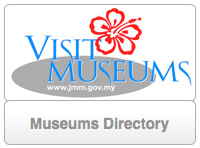| [bg|permuziuman] |
Normally, we understand the term ‘museum’ to mean a custodian of ancient things that are housed in an old building. This traditional view constantly changed until 1974 when UNESCO, through the International Council of Museums (ICOM), offered a more detailed definition of a museum as:
‘a non-profit, permanent institution in the service of society and its development, open to the public, which acquires, conserves, researches, communicates and exhibits the tangible and intangible heritage of humanity and its environment for the purposes of education, study and enjoyment.’
Generally, a museum is regarded as the trustee of national treasures that are invaluable and irreplaceable. It also serves as an unofficial centre of education. The resources and objects in a museum can contribute to the understanding and interest in either history, arts, science or the natural environment.
When we talk about museums, it should be seen in a broader and general perspective that extends beyond merely the storing and exhibition of artefacts in a building. In principle, a museum is set up to educate the people, conserve and preserve historical, cultural and natural heritage and for tourism purposes. Specific policies that involve the functions of the museum such as the Collection Acquisition Policy, Research Policy, Exhibition Techniques and Concepts, Conservation Methods as well as the Museology Education and Expansion Programme need to be formulated and serve as a guide for officers and staff of the museum.
A museum is managed according to these policies and within an organisational structure that is in line with the mission, objectives and functions of the museum. There are no rigid rules on the formation of this structure but it must meet the needs of the museum’s programmes and activities such as Administration, Finance, Publication, Editorial, Training, Record Centre, Archives, Public Relations, Marketing and Information Technology. This structure is important and it should be flexible and adaptable to requirements and changes or the specialisations of the museum.
Conservation is the most crucial aspect in the management of the museum collections. The function of the museum as the repository of the nation’s heritage will not be possible without its collections of artefacts. These collections give the museum an identity as well as contribute to its popularity. The reputation of a museum is very much dependent on the significance of the collections that it has and the methods it employs to make them available to the public such as exhibition techniques, interpretative programmes, marketing and publications about them in various media.
Museology encompasses various inter-related aspects to develop and establish a national heritage collection and education centre. Therefore, it can be concluded that a museum is a vehicle that bridges between the heritage of past civilisations and society.
 Printer-friendly version
Printer-friendly version- 4792 reads




